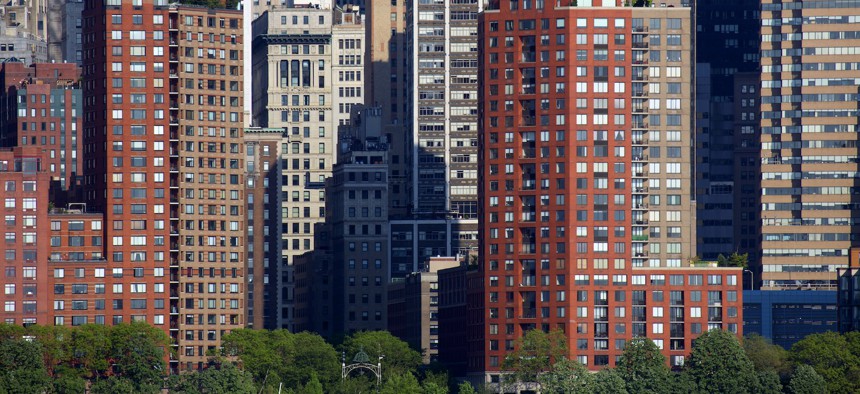The number of vacant housing units available to rent in the five boroughs dropped to a historic low in 2023, according to the latest New York City Housing and Vacancy Survey, released Thursday by the Department of Housing Preservation and Development.
The report found the number of available, habitable homes dropped to just 1.4% of the total rentable housing stock, the lowest since 1968, the year before New York passed its landmark rent stabilization law aimed at protecting tenants from heady rent increases in the tight market. That percentage represented just 33,000 available units citywide out of a total of 2.35 million habitable units in the first half of 2023.
The survey results represent a steep drop even from two years prior, in 2021, the year of the last accounting, when the survey recorded a rental vacancy rate of 4.54%. The drop spotlights the immense pressure low-income renters face amidst a brutal housing landscape, high inflation, and an uneven pandemic recovery.
The latest figures come as Mayor Eric Adams and Governor Kathy Hochul are pushing for more housing in their respective budget proposals and legislative agendas.
“The data is clear: the demand to live in our city is far outpacing our ability to build housing,” Mayor Adams said in a statement Thursday. “New Yorkers need our help, and they need it now.”
“While our administration continues to create a record number of affordable homes and helps more New Yorkers move into these homes than the city ever has before, we need more tools to house our neighbors, protect tenants, and deliver the affordability New Yorkers deserve,” the mayor said.
Growth in the city’s housing stock has slowed since the last survey in 2021, conducted triennially by the U.S. Census Bureau. In the two years since then, the city added just 60,000 new units – needed to house roughly 275,000 new households. By comparison, the city added 175,000 new units over the four preceding years, between 2017 and 2021, according to the previous survey.
Adams has repeatedly called for more state and federal aid, as well as action in Albany to replace the expired 421-a affordable housing tax credit, lifting a cap on floor area ratio, and enabling office-to-residential conversions. At the city-level, he is pursuing a series of zoning changes under the “City of Yes” campaign, intended to create 100,000 units over fifteen years. In January, Adams announced his “24 in 24” plan to build or preserve 12,000 units of affordable housing on public sites this year. In total, the mayor has set a goal of creating 500,000 new units by 2032.
In her State of the State address last month, Hochul rehashed a push for residential development with a focus on incentivizing municipalities to build housing, particularly along major transit corridors. The push comes after state lawmakers delivered a bruising defeat to her plan last year to create 800,000 units over the next decade using mandatory production goals. Hochul also has proposed a new affordable housing incentive to replace the previous 421a mechanism. The 485-x proposal, named for the section of the law the incentive would exist in, would give developers of rental projects a 35-year tax break for including affordable units, and 40 years for homeownership projects with affordability. The details of levels of affordability and the percentage of affordable units would be left to local officials.
The housing crunch is felt most acutely by the poorest New Yorkers. According to the survey, fewer than half a percent of apartments renting below $1,100 a month were vacant and available. While the lowest-cost housing bracket (homes renting for less than $1,500/month) has historically had a vacancy rate below 1%, the latest survey shows that middle-tier housing (up to $2,500/month) also dipped below that threshold in 2023.
Nearly nine out of 10 low-income New Yorkers (households earning below $50,000 a year) are rent burdened, meaning they spend more than a third of income on rent, the survey found. Along with increasing rent burden is a jump in missed rent, with the number of households reporting rent arrears leaping from roughly 84,000 in 2021 to 103,000 in 2023, or from 29% to 34% of all renters. The number of homes that are vacant but uninhabitable – dilapidated homes, pied-à-terres, and apartments between renters – also dropped by a precipitous 35%, another sign of extreme housing pressure.


